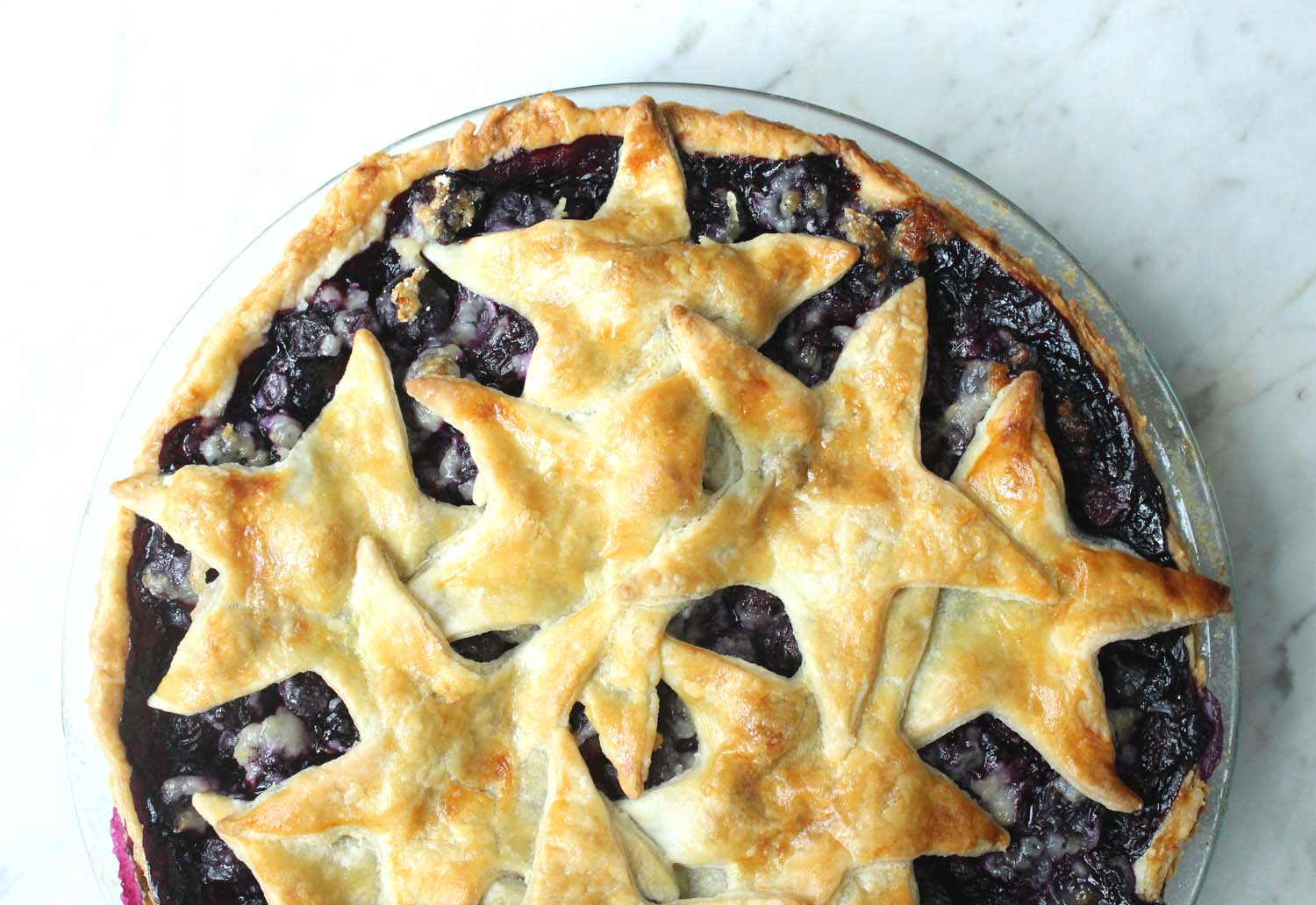Each week I follow along with Ina Garten (aka the Barefoot Contessa) and attempt to recreate one of her dishes in my tiny New York City kitchen. The catch? This is my version of cooking school and I’m making these recipes for the first time. I’ll share both my successes and um, challenges, along the way and we’ll see if I can keep up with the Contessa!
Episode: “Training Day Dinner”
The Set-up: Ina and Chef Joe Realmuto have offered to help make dinner for the East Hampton volunteer firefighters.
The Menu: Grilled Bread with Prosciutto, TownLine BBQ Pork Ribs, Sandy’s Potato Salad, Pear and Cranberry Crostata
0:42 – Ina is starting us off with Pear and Cranberry Crostata which she chose because it’s served room temperature, can be easily transported and is “absolutely delicious.” Good call on all three.
1:36 – I kind of assumed that crostata was basically a flatter version of a pie, but I notice that Ina isn’t putting any spices in with the diced pears, just a little orange zest.
2:05 – Pastry time, this recipe is a little different than the one she recommended for pie – it’s butter only, no vegetable shortening – and seems a bit softer.
3:28 – A quick intro to the East Hampton Volunteer Fire Department (est. 1975), so we know why this dinner is so important.
4:41 – Back with Ina to make the topping for the crostata – cinnamon, butter, allspice, sugar – and I ask myself, “How bad could that be?”
5:52 – These look seriously delicious and I can tell already that this is the recipe I want to make.
6:39 – I’m watching Ina intently as she finishes the final assembly – especially the crust folding technique – I think this maybe where the magic happens.
7:57 – Of course she makes it look so simple, but there must be a trick, right? I’m noticing no egg wash either which seems standard for getting golden brown pastry…
10:14 – Ina has rolled up to the EHVFD in an emergency vehicle of her own – emergency dessert.
11:23 – We get a little overview of the preparations underway, buffet tables, grill assembly, and Ina’s partner in crime: Chef Joe Realmuto.
12:45 – Ina heads upstairs to cook with Sandy, mastermind of Sandy’s Potato Salad, and Ina is put to work chopping hard boiled eggs.
13:16 – Sandy tells Ina that this is an old fashioned Southern recipe from her family tradition and I believe it – any mayonnaise based salad that also calls for pickle relish has got to be straight off the picnic table.
14:35 – Ina and Sandy have a heart to heart about how cooking is only kind of a science, since even the same ingredients vary in flavor. True story, sometimes you do everything the same and it just turns out differently!
15:28 – Taste test time and Ina approves of this “really old fashioned potato salad.”
20:34 – We’re outside at the giant grills set up for Chef Realmuto’s ribs which start with a dry rub of paprika, salt, sugar, ground mustard, chili powder, cumin, black pepper, garlic powder, and cayenne. Mike is a huge barbecue aficionado I wonder if he would approve of this recipe?
21:53 – Step Two of the process involves a “Texas mop”, a term I’ve never heard before, and it looks like a miniature version of a rope mop used for floors, except this one is used to baste the ribs every half hour.
22:15 – A little research tells me that “Texas mop” could also be referring to the basting sauce itself.
23:47 – Joe apparently made these ribs in a smoker at his restaurant and is just using the grill to re-heat. I’m relieved to hear that my fellow Yankees haven’t confused “grilling” with “barbecue.”
26:36 – Over to Ina who is making Grilled Bread with Prosciutto as an appetizer while Joe sets up giant platters of ribs.
27:50 – Yum. Ina is used smoked mozzarella on top of the prosciutto – I love smoked cheeses. My stomach is growling.
28:21 – Training is over and the buffet table is laden with all sorts of salads including Sandy’s Potato Salad, of course.
29:32 – The crostata is served and the cooking team celebrates with a round of high-fives!












